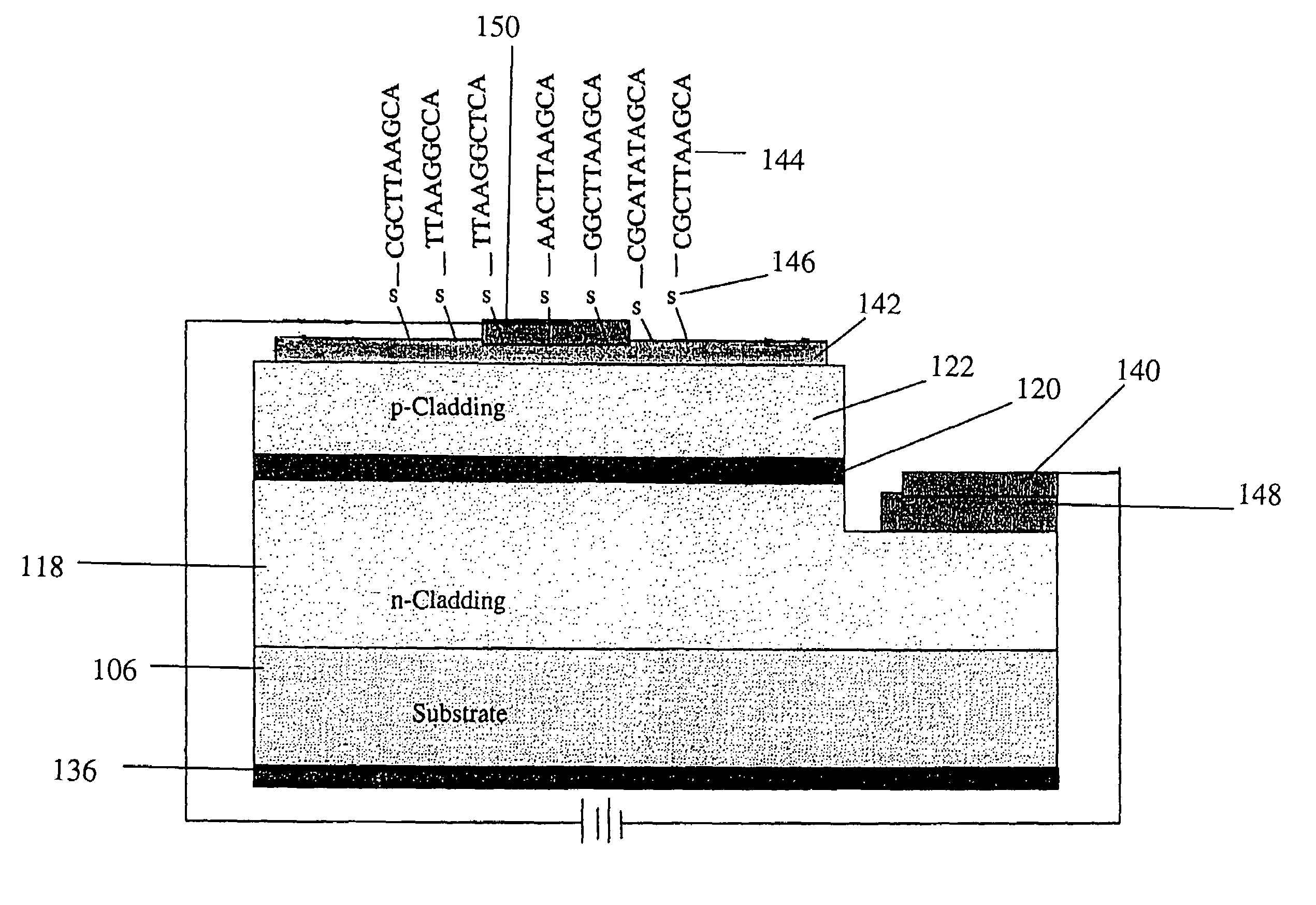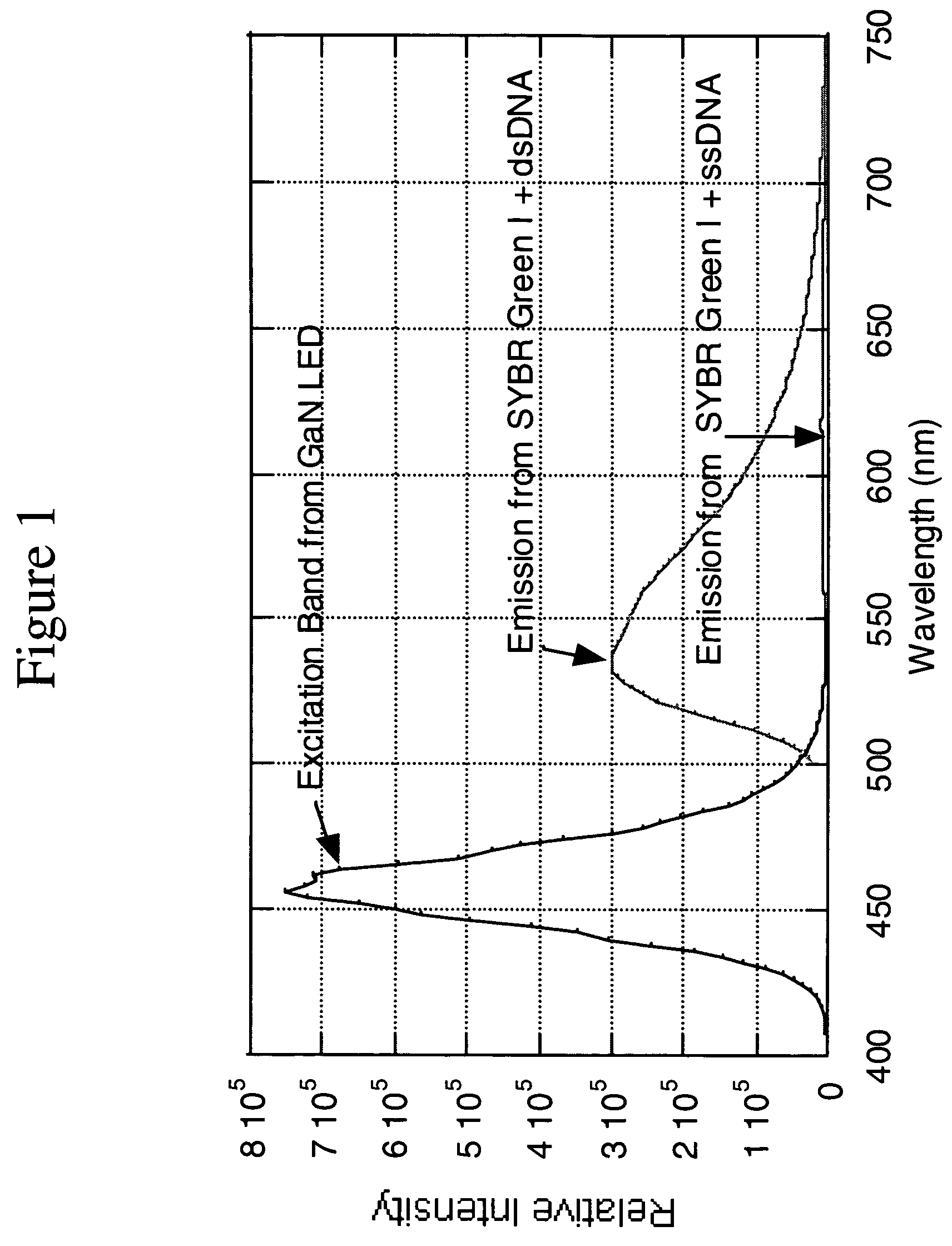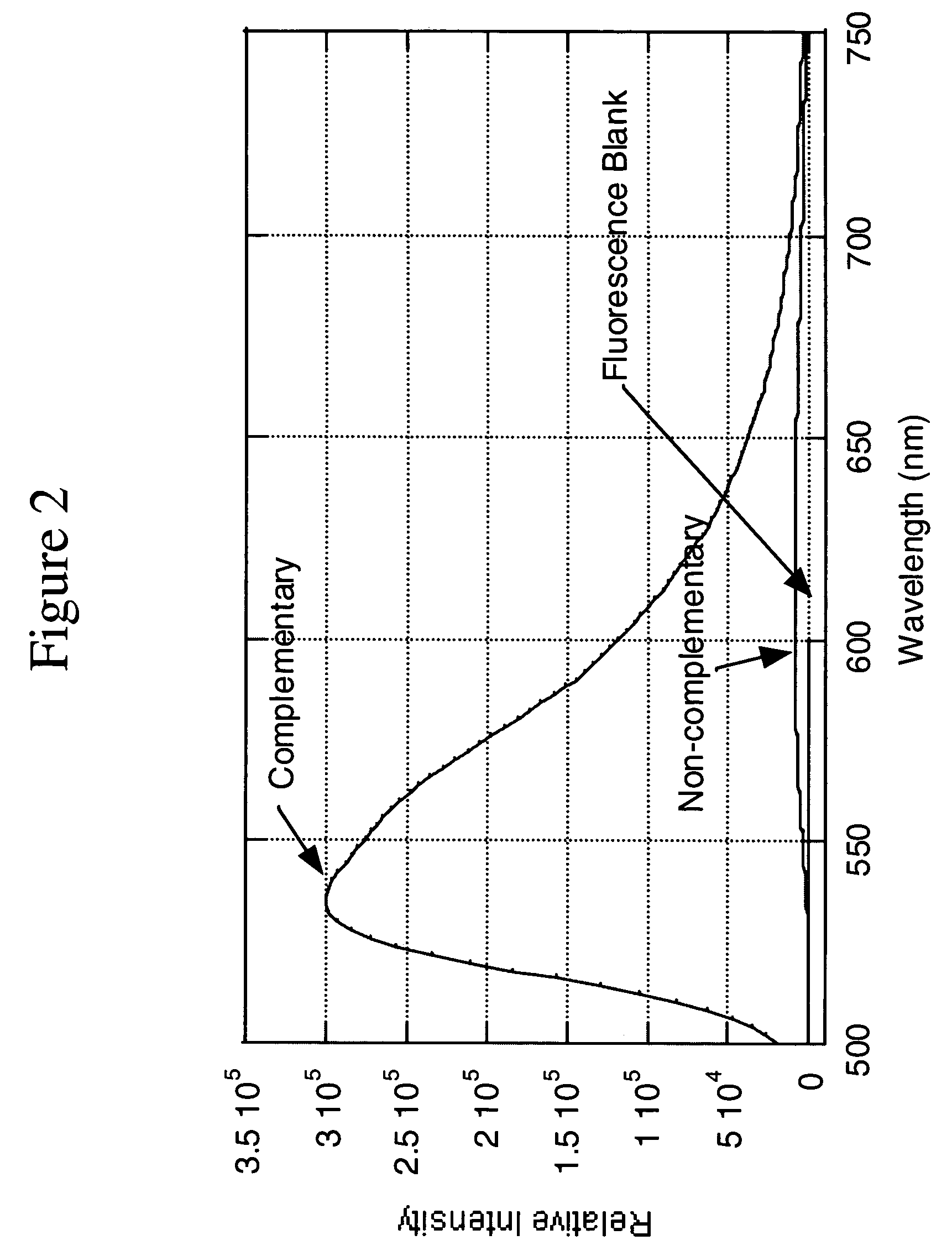Light-based system for detecting analytes
a light-based system and analyte technology, applied in the direction of semiconductor lasers, semiconductor laser structure details, radiofrequency controlled devices, etc., can solve the problems of difficult multiplexing of conventional tests, complex and expensive equipment, etc., and render such systems impractical for routine diagnostics or biohazard monitoring
- Summary
- Abstract
- Description
- Claims
- Application Information
AI Technical Summary
Problems solved by technology
Method used
Image
Examples
example i
[0073]An air-exposed GaN LED was sputter-coated with a thin layer of gold. Single stranded DNA oligonucleotides with thiolated 5′ ends were attached to the gold-coated surface. The LED was placed in contact with a solution containing a population of complementary ssDNA, a luminescent intercalating dye, and a buffer. After hybridization to form a DNA duplex, the device emitted green light for 30 seconds that was visible to the naked eye. The amount of DNA on the substrate was determined to be 110 fmol, or 1.3 ng of ssDNA. In the absence of complementary ssDNA, the device emitted blue light. The device also emitted blue light in the presence of non-complementary ssDNA.
[0074]FIG. 5 depicts a simplified view of an embodiment of the inventive device. The nucleic acid sensors 144 are bound via their thiolated 5′ ends 146 to p-type electrode 142, which has a gold-coated surface. Disposed over part of p-type electrode 142 is bond pad 150. The sensor molecules 144 hybridize with the analyte,...
PUM
 Login to View More
Login to View More Abstract
Description
Claims
Application Information
 Login to View More
Login to View More - R&D
- Intellectual Property
- Life Sciences
- Materials
- Tech Scout
- Unparalleled Data Quality
- Higher Quality Content
- 60% Fewer Hallucinations
Browse by: Latest US Patents, China's latest patents, Technical Efficacy Thesaurus, Application Domain, Technology Topic, Popular Technical Reports.
© 2025 PatSnap. All rights reserved.Legal|Privacy policy|Modern Slavery Act Transparency Statement|Sitemap|About US| Contact US: help@patsnap.com



